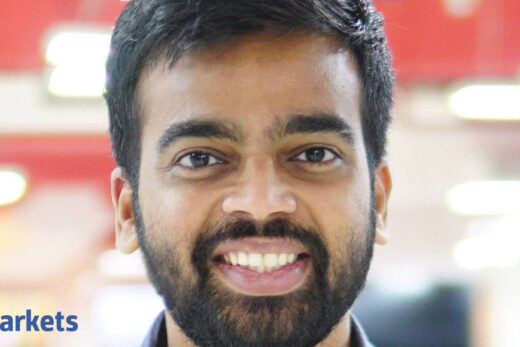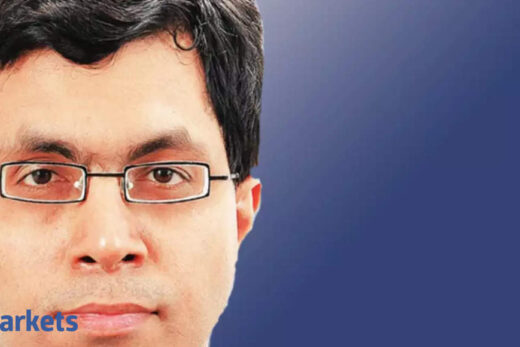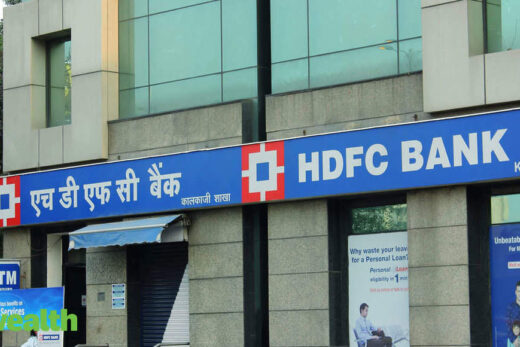We are seeing the second wave of COVID-19 ebb and major states have started opening in a big way. I want to understand your assessment of where we stand so far.
If you recall, after the financial year numbers had come, I had mentioned in my presentation that if we look at the last 10 days of the month of May, a lot of the high frequency indicators had hit that trough and were starting to go up. I think with the second wave continuing to decline and the pace of decline being as rapid as the pace of rise, these high frequency indicators are continuing their recovery. With the unlock also happening or the removal of restrictions happening across states, the recovery should get accelerated.
If we look at the overall assessments that we had made, we had done two scenarios. One of which was the expected one, where the peak would be hit for new infections by mid-May. That happened on 8th of May, so that scenario is what is transpiring so far. The recovery should continue with the announcement of frontloading of the infrastructure spending which was one of the key aspects of the budget as well. The analysis that we had done for Q4 numbers where a significantly higher capital expenditure spending meant that construction activity increased by about 15% and that had its positive spill over on the contact sensitive sectors and the consumption as well. So, these should help in the recovery going forward.
How are you looking at the growth numbers with respect to where we are going to end this fiscal year?
A couple of points on this. Firstly, if you again recall, I had mentioned that we have done an internal assessment. Given the uncertainty, we have not given an estimate per se. But what we have done is that our analysis suggests that the impact should not be very large. If you look at the RBI estimate from 10.5, they decreased it to 9.5; a 1% decrease. Our own estimation of the expected scenario which has manifested suggests that the impact should not be very large, but impact will be there. I think undeniably there will be some impact.
The reason that the impact is not likely to be as large is because the restrictions have for one been heterogeneous and asynchronous in timing and that is why in the April month, for instance, only a few states had restrictions, in May there were more restrictions. I think if we look at the GST numbers, that have come in as well. It reflects the fact that the asynchronicity of these restrictions meant that the impact on economic activities has not been as large. There is some impact, of course, but not that large and that is something that we can look at.
If you also look at the IIP numbers, of course, they are coming of a low base but still even on a month-on-month basis, there has been some good. Today if you also look at the advance tax estimates as well, they seem to be along good lines. And these are important because compared to some of the survey numbers, tax numbers are actual consumption and say they showed revealed preference. Overall, the recovery should continue and especially the vaccination effort is really critical for the third wave. Today, there is a nice article by Dr Devi Shetty who has said if the vaccination had a fast pace, the third wave may not be as intense.
Given the emphasis on the critical role of vaccine jabs in recovery, centralising of the vaccination programme and vaccine hesitancy in many rural areas, how do you see the entire immunisation programme impacting the pace of recovery?
I would leave the specifics of the vaccination programme for the health ministry to comment on, but I do think that given the projected ramp up in supplies in the month of August and September, there is definite possibility for us to be able to do much more. If for instance in the month of August and September we can increase the daily throughput significantly, which can be done.
I think the vaccine hesitancy has declined significantly. I was looking through a consumer survey that has been done by some consulting organisations, which shows that if you compare about six months back to now, there has been significant decline in vaccine hesitancy. Those that are sitting at the fence have actually gone down significantly, while there is some vaccination hesitancy still in the rural areas. It is a little bit greater in rural areas than in urban areas. But it has come down significantly and has decline sharply in the urban areas. I mentioned that because from the perspective of the economic recovery the urban areas are quite critical and vaccine hesitancy having come down significantly is something that should help the vaccination effort and thereby also the recovery.
RBI’s consumer confidence survey seems to reflect that demand has taken a hit. How is the government looking to get demand back on track?
As we were discussing in an earlier question that you had mentioned, if you look at the Q4 numbers, there was evidence of the impact of construction activity and infrastructure spending on various sectors. We saw the impact of the construction activity on contact-sensitive sectors and also on consumption itself. Do keep in mind, in the month of March the fear of the pandemic also had decreased significantly and that had held the contact-sensitive sectors to the demand for those to come back significantly.
I think the vaccination effort is really critical to the reduction in the fear of the pandemic and thereby a similar retrieval of demand in the contact-sensitive sectors. The efforts that are being made on the vaccination side are quite important on this count, but at the same time the increase or the frontloading of the capital expenditures that have been budgeted. Do keep in mind that the budget was significantly expansionary on the fiscal side and especially focussed on asset creation. Thereby, especially increasing infrastructure spending and the frontloading of that.
You must have followed the fact that the ministry is coordinating with other ministries to try and actually ensure that this frontloading actually happens. I think that would also be a very important component in bringing construction activity. Thereby, helping the urban poor because construction activity is really important for jobs in informal sector.
That combination of these two and the restrictions being removed will be an important part in the driving of demand. Last point I must mention is the impact of investment activity itself. We saw in the fourth quarter at about 34% of GDP, the gross fixed capital formation had hit almost at 24-25 quarter high. I think the reason as I mentioned is because investment, and the impact of that through the virtuous cycle is felt longer. That is something which should come back now with the restrictions being removed. That should also play a role in bringing back the demand.
Some top India Inc leaders believe that there is a need for some direct support and relief for stress sectors. While the government has widened the scope of the ECLGS, I want to understand what kind of room do we have for any stimulus? More importantly, is the government looking at a fiscal stimulus at this point of time?
As you have mentioned, the budget was significantly expansionary and the philosophy that underlined the budget, which is focussed on healthcare and on infrastructure spending, was widely applauded by stakeholders across the board. That philosophy has also been seen working when in the fourth quarter numbers, with the improvement in the construction activity, thereby creating positive spill over in several of the sectors.
Both the philosophy which has been acknowledged and the evidence of that working is something that we have to keep in mind. Given our earlier discussion, the frontloading of capital expenditure will play an important role. That said, as has been the case over the entire duration of the pandemic, the government is more than willing to listen to all the stakeholders. After seeing how the impact of this is panning out, govt will be more than ready to respond.



